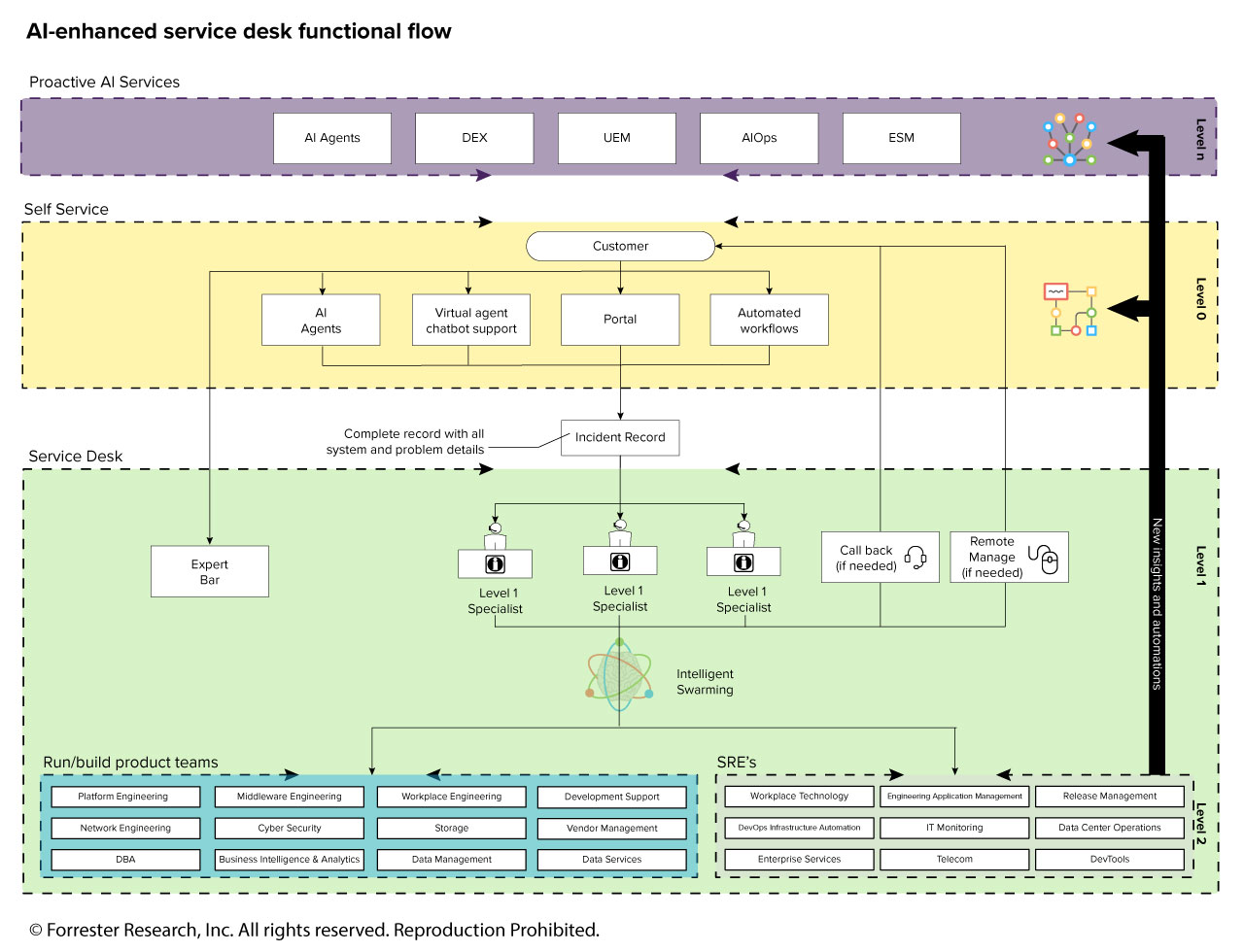The AI-Centric Service Desk: A Blueprint For Modern IT Operations
As digital transformation accelerates and employee expectations evolve, the traditional IT service desk model has reached a critical inflection point. The new report, The Forrester Guide To The AI-Centric Service Desk, outlines a compelling case for a fundamental redesign of IT support operations. Legacy service desks, which are structured around tiered human escalation and manual workflows, are no longer sufficient to meet the demands of a hybrid, digital-first workforce. Instead, organizations must embrace an AI-first approach that is pain-free, productive, personalized, pervasive, predictive, and product-centric.
This transformation is not simply about deploying new tools; it requires a reimagining of the service desk as a strategic product. The AI-centric model integrates automation, agentic AI, and intelligent workflows to deliver seamless, context-aware support embedded directly into the user’s digital environment. By shifting from reactive ticket-based systems to proactive, data-driven operations, IT leaders can significantly enhance digital employee experience (DEX), reduce operational costs, and improve service quality at scale.
Challenges Undermining Traditional IT Support Models
The traditional three-tiered service desk structure, comprised of generalists, technicians, and subject matter experts (SMEs), has become a bottleneck in modern IT operations. Each handoff introduces delays, increases costs, and diminishes end-user productivity.
Legacy systems also suffer from a lack of contextual awareness and personalization. Users are often forced to navigate complex portals or repeat information across channels, leading to frustration and disengagement. Moreover, the absence of predictive capabilities means that IT teams are constantly firefighting rather than preventing issues before they arise.
Another critical limitation is the siloed nature of IT operations. Without unified endpoint management (UEM), digital experience monitoring, and AI for IT operations (AIOps), service desks struggle to effectively leverage data. This fragmentation hinders automation, limits scalability, and prevents IT from aligning support delivery with business outcomes.
A Peek At The Future Service Desk
While these challenges are not new to support organizations, the way we solve them is undergoing a dramatic change. This image illustrates the evolving service desk structure, featuring new levels of support delivered only through technology, some with the customer in the loop and others without.

To realize the full potential of the AI-centric service desk, IT leaders must adopt a multilayered strategy that integrates technology, process, and culture. At the foundation is a restructured support model that replaces traditional tiers with intelligent automation and specialized roles.
Level n support, for instance, delivers no-contact resolution through proactive automation, combining AIOps, DEX, and UEM to detect and remediate issues before they impact users. Level zero support expands self-service capabilities through conversational AI (CAI), AI-enabled knowledge bases, and virtual agents embedded in collaboration platforms such as Teams and Slack. Level one specialists, equipped with advanced knowledge and intelligent swarming capabilities, handle complex issues that automation cannot resolve. Their collaboration with SMEs ensures faster root cause identification and minimizes unnecessary escalations. Meanwhile, level two site reliability engineers and product teams focus on building and maintaining automation, embedding security, and continuously improving support workflows.
Do you notice what is missing?
Build An AI-First Support Model First
Emerging technologies enable this transformation. Enterprise service management platforms automate routine tasks and enhance agent productivity. DEX tools deflect incidents through proactive remediation, saving millions in operational costs. CAI and AI agents streamline workflows and reduce the number of human-handled requests. UEM platforms unify endpoint management and security, while AIOps reduces IT noise and accelerates incident resolution. Experience-level agreements shift performance measurement from infrastructure uptime to user satisfaction, aligning IT with business value.
In conclusion, the AI-centric service desk is not a future aspiration — it is a present-day necessity. By adopting this model, IT leaders can transform support operations into a strategic enabler of productivity, resilience, and digital experience. The path forward demands bold leadership, cross-functional collaboration, and a relentless focus on user outcomes.
Let’s Connect
Have questions? That’s fantastic. Let’s connect and continue the conversation! Please reach out to me through social media or request a guidance session. Follow my blogs and research at Forrester.com.
